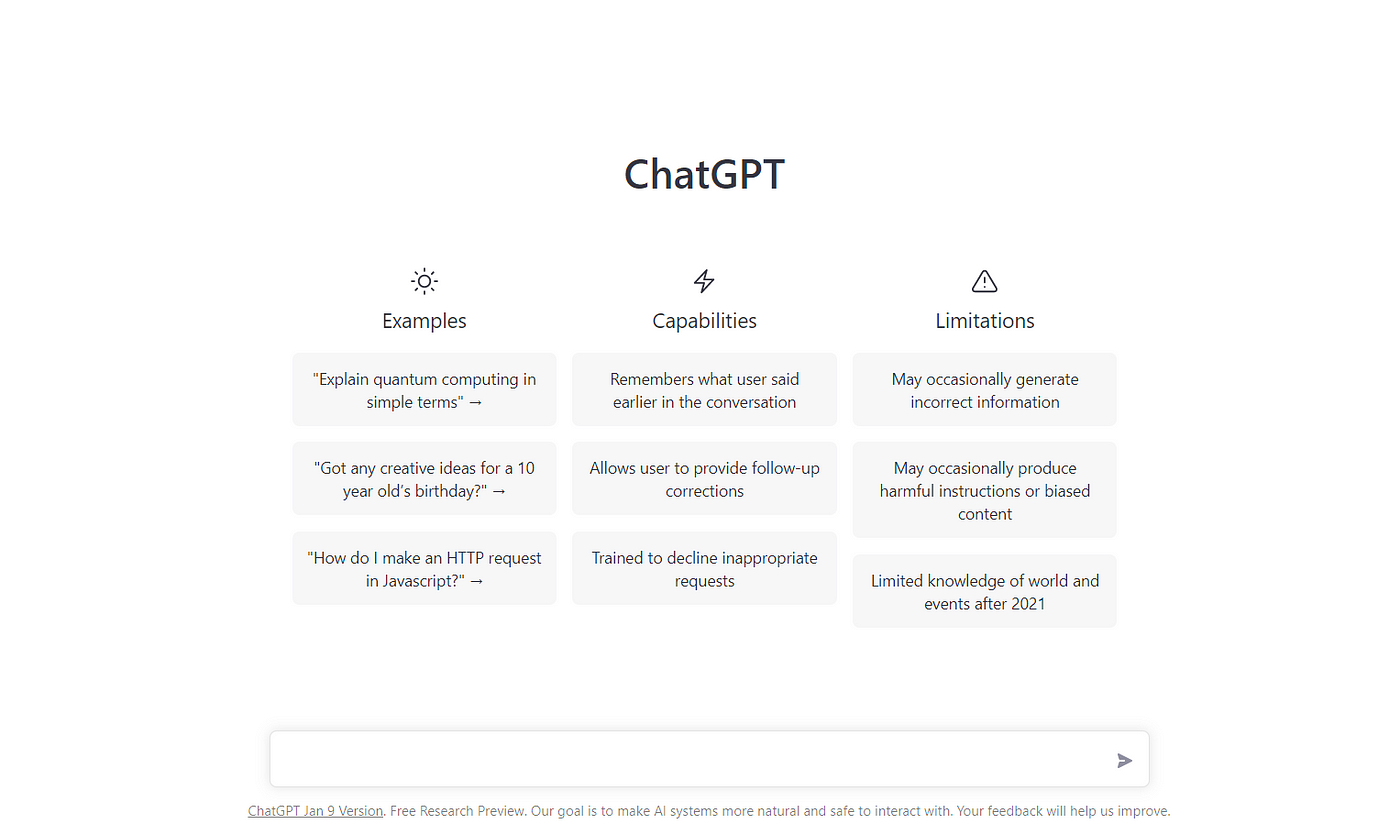
As we enter 2023, many technology companies that experienced significant growth in the post-pandemic climate of 2021-2022 are now facing a new set of organizational challenges.
The latter half of 2022 saw a rise in layoffs across the tech industry, with over 100,000 tech workers impacted in the United States alone.
Additionally, the economic climate is uncertain due to a global slowdown, technological developments in AI/ML have accelerated, and cybersecurity risks continue to escalate. Furthermore, the usual challenges of managing legacy software and coordinating remote teams still remain.
It wouldn't be too far off the mark to suggest that tech companies face an even steeper hill to climb in 2023.
In what follows, we'll look at the top five organizational difficulties that tech companies are likely to encounter this year, with recommendations for how to address them.
1. Knowledge Sharing and Knowledge Management
Traditionally, developers gradually accumulate knowledge about their project over time while working on it. However, this knowledge - whether code documentation, optimizations, or known bugs - remains scattered across Wiki pages, code comments, readme files, Slack conversations, emails, and sometimes, just within the mind of the developer.
This creates an organizational bottleneck that is pervasive - you'll face it at every stage of the development cycle. When new developers join the team, when they switch projects, when they collaborate with other teams, and especially when they have to work on legacy code.
Bearing in mind the large number of recent layoffs, brain drain will be inevitable. There's a good chance that the developer who wrote the original code moved on years ago. The lack of an efficient knowledge-sharing process cripples the agility and velocity of the engineering team and affects the company's capacity to achieve business goals.
A solution requires knowledge to not only be documented, but to also have that documentation be regularly updated.
As per GitHub's State of the Octoverse 2022 report, "In both open source projects and enterprises, developers see about 50% productivity boost with easy-to-source documentation."
This is where knowledge management tools (KM tools) like Swimm can provide engineering teams with code-coupled documentation that can unlock bottlenecks and boost productivity. Swimm enables teams to build a knowledge management framework in the form of a Continuous Documentation pipeline or "Docs as Code" solution. This ensures that code and documentation are created - and maintained - together.
Such a solution would work on three basic principles:
- Always up-to-date: To keep the documentation in sync with the codebase, existing documentation is checked against the current state of the code continuously and automatically. This is "Continuous Documentation" - whenever the code changes, the developer is notified to help them update the documentation accordingly - even failing builds if the documentation isn't up to date.
- Created with the best mindset: The best documentation is written when code changes are still fresh in the developer's mind, and not when forced to document code written _months ago _--- and this is exactly what Swimm enables by letting devs write code-coupled documentation quickly and easily, right inside their IDEs.
- Code-coupled: The documentation explicitly references parts of the code rather than just explaining it. This is also known as "walkthrough documentation" because reading it gives developers the same feeling as having the programmer who wrote the original code sit right next to them and guide them through it.
→ Explore the concept of "walkthrough documentation"

Code-coupled IDE-integrated documentation with Swimm.
Gartner's 2022 Planning Guide for Collaboration and End-User Technologies, listed internal knowledge management as "critical to productivity and continuity." This is no different for 2023 and will continue to be a major pain point for organizations until addressed.
For engineering teams, Swimm provides a novel approach to the management of organizational knowledge that is well worth your time and attention.
A case study of how Swimm was used to successfully onboard and train new developers during Covid-19: Growing a Dev Team without the Growing Pains
2. Rapidly Evolving Technologies
Recent developments in the fields of artificial intelligence and machine learning especially have taken the world by storm. Last year saw the introduction of OpenAI's ChatGPT, a groundbreaking example of what AI technology can achieve, if applied at scale.
The question is not whether AI is going to take over, the question is whether companies can harness such technology to their benefit.

OpenAI's ChatGPT made waves last year, and is continuing to do so.
→ Learn more about how ChatGPT is bound to change the tech landscape
Incorporating AI and ML technology, however, is no simple task. Some of the challenges faced are:
- The need for specialized expertise and resources. These are rapidly evolving fields, and effectively using (and maintaining) these technologies requires a deep understanding of the underlying algorithms and models, as well as the ability to work with large amounts of data. This may require hiring new employees or training existing staff which can be costly and time-consuming.
- Addressing ethical considerations such as privacy and bias, as there may be increased scrutiny and regulations around these issues.
- Building trust with customers. Many end-users may be skeptical of AI and ML, so companies will need to work to educate users and build confidence in their products and services.
Solutions include:
- Investing in employee training and development programs to build specialized skills and knowledge in AI and ML, and to stay up-to-date. Companies can also partner with universities, or specialized training organizations.
- Using pre-trained AI models and AutoML (Auto Machine Learning) tools such as Google AutoML or H2O.ai to speed up the development process.
- Implementing best practices for responsible AI development, such as fairness and explainability, to address ethical considerations such as privacy and bias. Tools like IBM's AI Fairness 360 and Microsoft's Fairlearn can help to identify and mitigate bias in AI models.
- Implementing a data governance framework, to ensure the data is accurate, complete, and protected; companies can use software such as Collibra or Informatica.
Additionally, companies can also participate in research and development initiatives, and attend conferences/events to stay up to date on AI/ML developments.
Learn more about the data governance framework: Data Governance Framework: 4 Pillars for Success
3. Increasing Security Concerns
According to the _2022 Cyber Security Insights _Report, the rate of cyberattacks in 2022 went up by 60% compared to 2021. In the previous three years alone, over 75% of organizations have been affected by cyberattacks. Here are some of the cybersecurity challenges facing tech companies in 2023:
- Advanced Persistent Threats (APTs): These are highly sophisticated and targeted attacks that are designed to evade traditional security measures and gain long-term access to a network or system.
- Cloud Security: As more companies move their data and applications to the cloud, they may face new security challenges related to data protection, access control, and compliance.
- Artificial Intelligence and Machine Learning Security: As AI and ML become critical moving parts in a company's stack, they'll need to secure these systems from cyberattacks, and ensure AI models used are robust and trustworthy.
- Internet of Things (IoT) Security: As the number of connected devices continues to grow, software development companies may face new challenges related to securing these devices and the data they collect and transmit.
And some potential solutions to the above challenges:
- Implementing threat hunting techniques, using [endpoint protection platforms](https://www.vmware.com/topics/glossary/content/endpoint-protection-platform.html#:~:text=An%20endpoint%20protection%20platform%20(EPP,devices%20to%20protect%20against%20threats.&text=EPP%20solutions%20are%20typically%20cloud,advanced%20monitoring%20and%20remote%20remediation.); and using security information and event management (SIEM) such as SolarWinds or IBM's QRadar.
- Multi-factor authentication (MFA), using cloud access security brokers (CASB); additionally, implementing encryption for data at rest and in transit, with services like Azure's Key Vault.
- Regular security audits, penetration testing, incident response planning, employee training, and threat intelligence.
- Using AI-based security solutions like an AI-based firewall, or AI-based intrusion detection and prevention systems.
- Implementing security by design, using device management platforms like Azure IoT.
- A well-defined backup and security plan, in case of a ransomware attack so that the company's business doesn't get affected.
It's worth mentioning that the above list is not exhaustive and based on their specific needs, companies can also adopt other solutions.
More on SIEM and IBM's QRadar: Don't let SIEM Myths stand in the way of modernizing your SOC - The Fundamentals of SIEM
4. Managing Remote Teams
Working remotely became the new norm in the post-Covid climate, and it's here to stay.
A remote working team offers cost savings on real estate, a global and diverse talent pool, and even increased productivity as per certain reports. Nonetheless, certain concerns persist such as team coordination and communication, knowledge sharing, performance evaluation, social isolation, work/life balance, and training new employees who come on board.
Here are measures that can be taken to mitigate the aforementioned problems:
- Providing support and training remotely: As mentioned before, knowledge sharing is a problem that affects remote teams, especially when new employees are brought on board. Documentation tools like Swimm, along with providing code-coupled 'walkthrough' documentation, also lets you create a documentation playlist: a collection of all the relevant documents, links, markdown files, etc. in a well-defined orderly fashion. This would help make the onboarding process seamless. Venn, a mobile app company, has already leveraged such technology to scale developer onboarding and to great success.
- Managing communication and collaboration: Implementing a wide variety of collaborative tools to facilitate remote work, such as cloud-based project management and code-sharing tools, as well as communication tools like Zoom, Google Meet, Microsoft Teams, etc. for video conferencing, and instant messaging and group chat apps like Discord or Slack can help with communication between teams.
- Evaluating performance: To track key performance indicators and ensure that remote work is not impacting overall performance, companies can make use of time-tracking tools like RescueTime. Dashboard tools like Trello which are visible to the entire team are also good for assigning projects to individuals, setting deadlines, providing feedback, and keeping everyone on the same page if the team is operating in different time zones.
- Managing work-life balance and socialization: Companies can encourage employees to take regular breaks and have clear boundaries between work and personal life. Along with that, virtual team-building activities can encourage employees to connect with their colleagues through online communication platforms.
5. Supply Chain Bottlenecks
Tech companies are presently facing difficulties in sourcing necessary parts and supplies and the trend seems set to continue in 2023. This is owing to the shortage of semiconductors - due to manufacturers shifting focus from automotive to consumer electronics during the pandemic - which has caused production delays across a huge number of industries.
Meanwhile, equipment costs have also risen due to inflation, leading to lengthy equipment delivery timelines which affect the workflow of IT projects. Yet another concern in this area is the shortage of manpower affecting supply chains.
Now, post-pandemic, these companies are seeing high demands, but their existing supply chains can't keep up.
Here's how companies can better manage supply chain problems:
- Use data analytics tools: Data analytics tools specifically geared toward supply chain analysis such as SAP can assist companies with supply chain analysis by providing features such as monitoring supplier performance, tracking shipments and inventory levels, and forecasting potential supply chain disruptions by analyzing past trends. Real-time visibility into your supply chain, inventory, and metrics means an optimized supply chain.
- Diversify the supply chain: Tech companies that are scaling up might require a huge number of supplies on short notice. Having more than one supplier helps companies prevent supply chain disruptions in case of an unforeseen event or an emergency. Also, more suppliers equal more competition, more competitive prices, and better service.
- Use ERPs for Supply Chain Management: Enterprise Resource Planning (ERPs) systems such as SAP S/4HANA help companies improve their supply chain management by integrating internal business processes, enhancing the flow of information among different departments, improving inventory management, and streamlining purchasing processes.
Conclusion
In conclusion, tech companies are facing a range of challenges in 2023, including knowledge sharing and management, advancements in AI/ML, cybersecurity risks, supply chain disruptions - and most importantly, an uncertain economy.
A few of the solutions mentioned include using documentation tools, staying up-to-date with new technologies, implementing robust security measures, investing in IT infrastructure, ensuring multiple suppliers to tackle supply chain disruptions, and fostering adaptability.
Tech companies that address these challenges sooner, rather than later, stand the best chance at sustained success.
Further reading: AI Still Hasn’t Figured Out Branding (Yet) — Here’s Why




